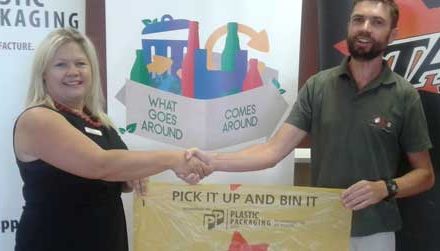
Dundee distances itself from claims of contaminated drinking water supplied by Tsumeb Municipality

Dundee Precious Metals Tsumeb (DPM) confirmed this week that the biological contamination of drinking water supplied by the Tsumeb Municipality was not in any way a result or consequent to the smelter’s operations.
DPM revealed that they detected the contamination through its routine quarterly sampling procedures, and upon receiving the results, the company immediately informed the authority responsible for the provision of drinking water to the site, which is the Tsumeb Municipality, according to a press statement dated 19 January.
“As a good corporate citizen who puts the health and well-being of people first, DPM informed the Municipality immediately upon receiving these results,” said Zebra Kasete, Vice President and Managing Director of DPM Tsumeb.
He added that they acted promptly to supply their employees with bottled water as a precautionary measure until the Tsumeb Municipality resolves this issue.
This comes as last month, Kasete issued a statement claiming Tsumeb’s water is not fit for human consumption based on a microbiological quality assessment.
“We strive to be a good partner to the local community and prioritize the well-being of public health. We will continue to support the Tsumeb Municipality in its efforts to resolve this issue,” Kasete said.
Meanwhile, in terms of the routine water sampling program quarterly, DPM draws samples of its drinking water which are then sent to an externally certified laboratory for testing.
“When test results indicate that drinking water quality is outside of normal parameters, DPM’s procedure is to notify the Municipality of Tsumeb of these results and to take measures to ensure a supply of fresh, safe drinking water available to its employees,” the copper smelter said in a statement.
In keeping with this procedure, DPM notified the Municipality on 13 December 2022 of the findings from its most recent sampling and test work, the statement continued.
“To date, we have alerted the municipality about our findings, shared the results, and provided professional support by offering remedial action, including laboratory support to test water treatment efficiency,” Kasete added.
The smelter produces 98.5% pure copper blisters, and with its ability to treat complex copper concentrates, it is transitioning from a captive smelter, receiving mainly DPM concentrates, into a toll treatment facility, with brownfield expansion potential. DPM is one of the largest employers in the Oshikoto region, with a workforce of approximately 600 employees.













































